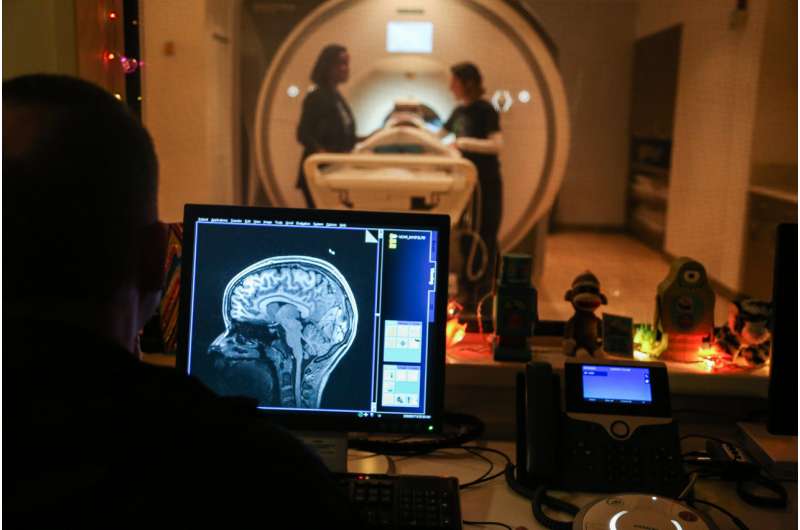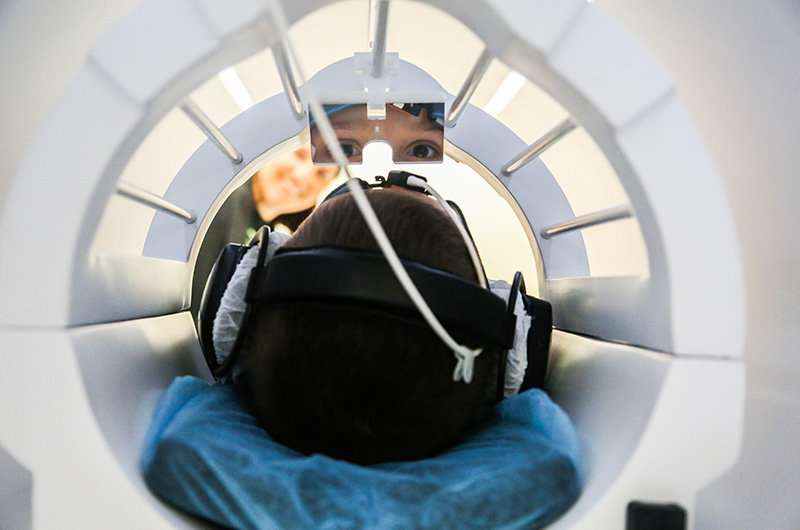New parts of the brain become active after students learn physics

Parts of the brain not traditionally associated with learning science become active when people are confronted with solving physics problems, a new study shows.
The researchers, led by Eric Brewe, Ph.D., an associate professor in Drexel University's College of Arts and Sciences, say this shows that the brain's activity can be modified by different forms of instruction.
Using fMRI (functional magnetic resonance imaging) to measure blood flow in the brain, the researchers looked to map what areas become active when completing a physics reasoning task, both before a course on the concepts and after.
"The neurobiological processes that underpin learning are complex and not always directly connected to what we think it means to learn," Brewe said of the findings, which were published in Frontiers in ICT.
More than 50 volunteer students took part in the study in which they were taught a physics course that utilized "Modeling Instruction," a style of teaching which encourages students to be active participants in their learning.
Before they participated in the class, the students answered questions from an abridged version of the Force Concept Inventory while undergoing fMRI. The Force Concept Inventory is a test that assesses knowledge of physics concepts commonly taught in early college physics classes.
After the volunteer students completed their physics course, they again took the Force Concept Inventory, once more monitored by fMRI.
In the pre-instruction scans, parts of the brain associated with attention, working memory and problem solving—the lateral prefrontal cortex and parietal cortex, sometimes called the brain's "central executive network—showed activity.
"One of the keys seemed to be an area of the brain, the dorsal lateral prefrontal cortex, that generates mental simulations," Brewe said. "This suggests that learning physics is an imaginative process, which is not typically how people think of it."
After the subjects had completed their class, comparison of the pre- and post-learning scans revealed increased activity in the frontal poles, which was to be expected since they've been linked to learning. But there was another area that also became active: the posterior cingulate cortex, which is linked to episodic memory and self-referential thought.

"These changes in brain activity may be related to more complex behavioral changes in how students reason through physics questions post- relative to pre-instruction," Brewe and his co-authors wrote about the study. "These might include shifts in strategy or an increased access to physics knowledge and problem-solving resources."
One of the aims of the study was to further explore how the form of teaching used, Modeling Instruction, encourages students to use their own mental models to understand new concepts.
"The idea of mental models is something that people who research learning love to talk about, but have no evidence of what is happening inside brains other than what people say or do," Brewe said. "We are actually looking for evidence from inside the brain."
As such, Brewe and his fellow researchers think their study provides a good look at what might be typical when these "mental models" take hold.
But why physics? What makes this the ideal subject to study mental modeling in the brain?
Brewe said that there has been some research on the brain networks associated with learning math and reading. But mental modeling especially lends itself to physics, which has not gotten as much attention.
"Physics is a really good place to understand learning for two reasons," Brewe said. "First, it deals with things that people have direct experience with, making formal classroom learning and informal understanding both relevant and sometimes aligned—and sometimes contrasted."
"Second, physics is based in laws, so there are absolutes that govern the way the body works," Brewe finished.
Moving forward, Brewe is excited by what this study opens up in his quest to improve physics learning in the United States and beyond.
"I would like to follow up on the question of mental simulations in physics, to see where that shows up at different levels of physics learning and with different populations," he said. "But this whole study opens up many new areas of investigations and I'm pretty excited about how it will play out."
More information: Eric Brewe et al, Toward a Neurobiological Basis for Understanding Learning in University Modeling Instruction Physics Courses, Frontiers in ICT (2018). DOI: 10.3389/fict.2018.00010
















